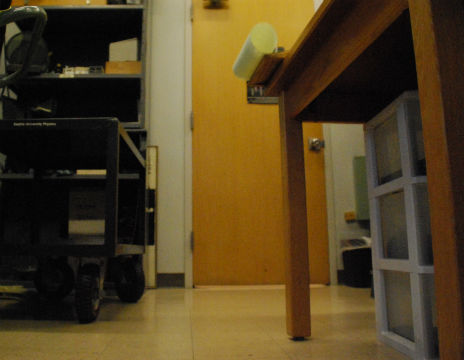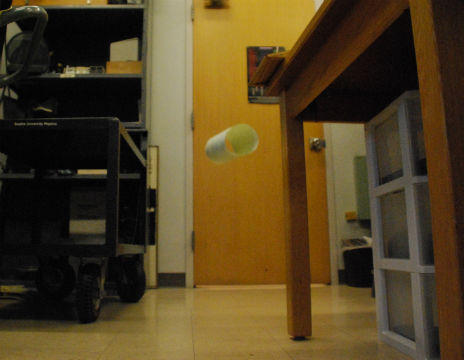
Magnus Effect
The Magnus effect is why soccer players can bend a soccer ball into the goal around a 5-person wall and why baseball pitchers can throw a breaking ball pitch. A spinning object in motion exerts a net force on the air, which according to Newton's 3rd law exerts an equal and opposite force back on the moving and spinning object, altering its trajectory. As seen in the diagram below, air gets dragged along with the direction of motion, experiencing a(n upwards, in this case) force.

To demonstrate this in a classroom, we need a rolled up sheet of paper.

And we need a slope.

Now when we release the paper, it rolls down the ramp, building up translational and angular velocity. As it falls, it's trajectory seems to curve backwards.



To verify that physics isn't broken, let's do the same thing with a tennis ball.


In this case, the ball doesn't spin at a high enough rate to create a noticeable Magnus effect relative to the other forces acting upon it.
The Magnus effect is why soccer players can bend a soccer ball into the goal around a 5-person wall and why baseball pitchers can throw a breaking ball pitch. A spinning object in motion exerts a net force on the air, which according to Newton's 3rd law exerts an equal and opposite force back on the moving and spinning object, altering its trajectory. As seen in the diagram below, air gets dragged along with the direction of motion, experiencing a(n upwards, in this case) force.

To demonstrate this in a classroom, we need a rolled up sheet of paper.

And we need a slope.

Now when we release the paper, it rolls down the ramp, building up translational and angular velocity. As it falls, it's trajectory seems to curve backwards.



To verify that physics isn't broken, let's do the same thing with a tennis ball.


In this case, the ball doesn't spin at a high enough rate to create a noticeable Magnus effect relative to the other forces acting upon it.